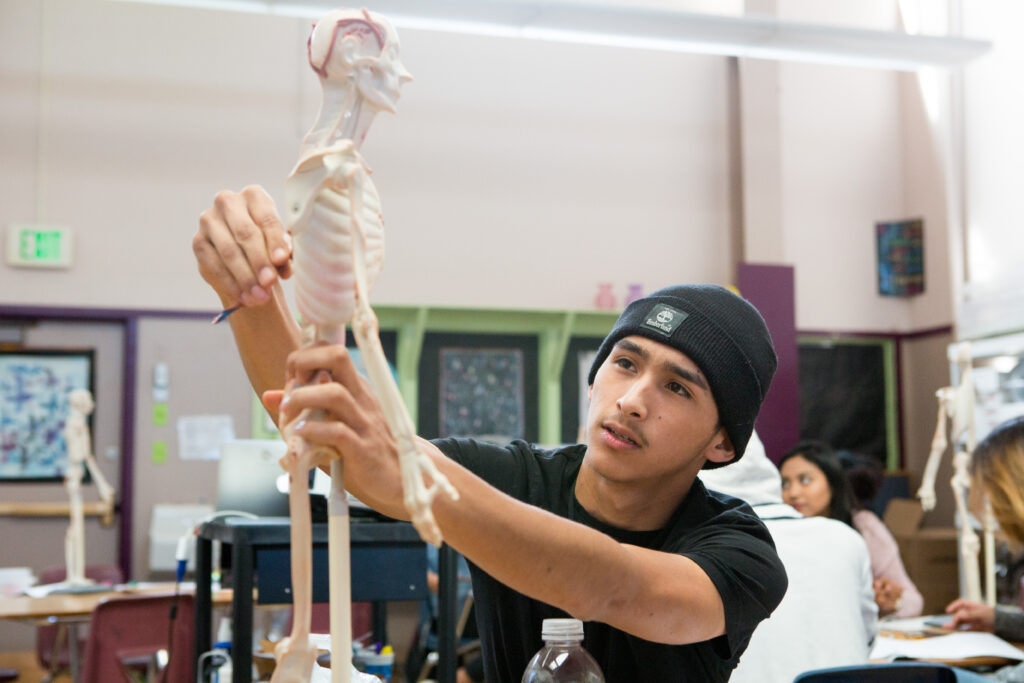During this summer, a team of students from MIT embarked on a journey to the sou …
Success for Students Relies on Collaborative Efforts from School to College to Career
Lila Lightbringer

Can partnership between TK-12 schools, colleges, and industries enhance educational equity and opportunity for the most high-needs learners? California is wagering on a $250 million investment in the Regional K-16 Education Collaboratives Grant Program to support that notion.
The success of around 6 million public school students in California, 60% of whom come from low-income families, relies on the ability of educators and employers to create seamless pathways to degrees and careers. This is no easy task and demands a significant commitment of time, effort, and resources.
Amid the pandemic in 2020, 15 education organizations in the Central Valley, including school districts, community colleges, and four-year institutions, united to enhance dual enrollment opportunities and skill-building programs. The Fresno-Madera K-16 Collaborative has already guided numerous learners toward higher education. Building on this initial success, the California Department of General Services has invested $250 million in the Regional K-16 Education Collaboratives Grant Program to fund career-oriented pathways and Recovery with Equity recommendations. In June 2022, nine regional collaboratives received four-year funding, and recently a second-round application to fund additional collaborative regions closed on Oct. 3.
Often, innovations in education and workforce development exist in separate silos without support to foster a community of practice or align strategies. The objective of the K-16 grant program is to break down these barriers and encourage regional entities to collaborate in advancing educational equity and workforce resilience. However, since regional efforts are relatively new, there is limited research and few resources available to support them.
Here are a few key insights we have learned from our experience supporting educational and workforce partners:
Focus on learners and equity. Partners in a regional collaborative come together with a unified goal of promoting equity of opportunity for learners. Thus, learners should be at the forefront of all discussions. One suggested principle to guide the collaborative is to consider every student, regardless of age, location, or chosen path, as a collective responsibility, using this perspective as a guiding principle in decision-making.
Ensure balance. The composition of an educational collaborative is crucial. Representation and equity are essential when making significant decisions, especially regarding the allocation of funding. To ensure the commitment of all partners, it is important to consider educational segments, geography, and the distribution of partners across the education and industry sectors. While postsecondary partners may have larger support structures, resources, and student populations, the involvement of TK-12 districts and county offices of education is vital for the success of K-16 collaboratives. Therefore, TK-12 partners may require additional financial support to ensure equitable representation and influence.
Build deep and authentic employer engagement. Strong partnerships with industries play a key role in developing pathways in high-needs areas and improving career education and work-based learning opportunities for students. Achieving this within a collaborative setting can be challenging due to the historical separation between public education and private industry. Businesses and employers must actively participate in meetings and discussions. Talent pipeline management, an approach to workforce development that positions employers as end customers of education supply chains, can be beneficial in such collaborations.
Dedicate staffing. For a collaborative to be effective and sustainable, it must have dedicated staff. Relying solely on volunteers presents challenges as members, who are usually full-time employees, have limited availability. Dedicated staff can maintain momentum, handle daily operations, and ensure the success of the collaborative. It is important to acknowledge the limited availability of members and provide support and incentives for their participation, if feasible, to enhance engagement.
Design a funding model that is equitable and sustainable. Deciding how to allocate funds is a significant decision that impacts the collaborative’s ability to achieve its priorities. When determining where funds will have the greatest impact, consider the specific challenges faced by different educational institutions. For example, rural high schools often have smaller student populations and face greater obstacles in competing for grant funds and establishing career programs due to their geographic isolation and limited resources. Whenever possible, leveraging existing funding for a common purpose can help break down silos and maximize the long-term impact of collaboration. The Community Economic Resilience Fund (CERF), a $600 million state grant program, aligns with the K-16 Collaboratives grant program and supports regional communities in developing coordinated roadmaps for economic development and creating high-quality jobs in sustainable industries.
An old saying goes, “If you want to go fast, go alone. If you want to go far, go together.”
In a recent panel on diversifying the health care workforce, Freeman Hrabowski, a former educational adviser to President Barack Obama, emphasized the importance of collaboration across different levels of education. He stated, “We need policies that will have more substantive collaboration across levels.”
Every TK-16 school in California showcases pockets of innovation and dedicated educators working tirelessly to ensure their students succeed. Regional collaboration can harness and amplify the impact of these individuals to drive systemic change.
•••
Annie Sterling is a program manager at Capitol Impact, a Sacramento-based social impact consulting firm, and previously served for more than a decade as an English language arts and social studies teacher in California public schools. Natalie Lenhart, Lex Carlsson, and Alex Taghavian of Capitol Impact contributed to this op-ed.


